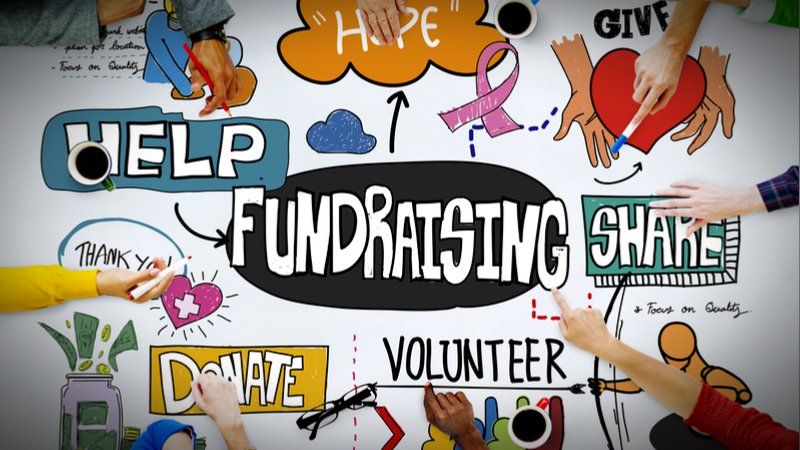Why it needs to be done, and how to make it happen

“You need to be fundraising.”
Consultants regularly provide this guidance to nonprofit boards reluctant to get involved in fundraising. Prospective members often walk away when they’re informed “give or get” is a requirement. Executive Directors get frustrated when the imperative is altogether ignored, and they don’t get any help with building the kind of relationships with sponsors and large donors needed to support their organizations. Fundraising is a burden many boards and their individual members really don’t want to embrace. Sometimes, boards don’t understand why it’s important or accept it’s their responsibility. When they do, the “give” expectations are often financial commitments people can’t, don’t want, or don’t think they’re able to make, and the activities involved in the “getting” understandably fall outside of their comfort zones.
To be sure, there are boards that do “get it,” at least to an extent, and do accept responsibility for fundraising. In VAFCC’s 2021 Board Governance Survey, for example, nearly 60% of respondents indicated their boards have fundraising committees. Members contribute money directly at 70% of the organizations (the “give”), and about 60% told us people are leveraging their networks for donations (“the get”). In the same survey, however, more than half of participants viewed board engagement in fundraising as a top challenge and, when presenting to sponsors and major donors, board members regularly participate at just 10% of their nonprofits. This situation isn’t unique to our survey population. Studies suggest that a significant number of boards don’t adequately support their nonprofits’ fundraising needs.
Every board should play a significant role in fundraising, preferably through both direct contributions and solicitation of institutional and individual gifts, for several reasons:
- Member giving is a tangible expression of a board’s belief in and commitment to the nonprofit’s mission. It lends a degree of credibility to the organization’s donor development efforts—both for routine individual outreach by staff and when members are trying to leverage their networks for more significant gifts. Nonprofits don’t have to answer: “If they’re not giving, why should I?”
- When members are financially invested in a nonprofit, they’re often more willing to do what it takes to ensure the organization is successful and sustainable. It’s not a prerequisite—there are certainly people on boards who will have that attitude anyway—but it can change the mindsets of members who may otherwise not meaningfully participate in governance and support activities.
- Corporate sponsors, foundations, and other institutions may not fund nonprofits that can’t show all of their members financially supporting them. For many funders, it’s about credibility. They seek confidence boards are unified and fully engaged in pursuing the organization’s best interests. For reasons like those above, member giving can be a good proxy that helps provide these assurances.
- Board members typically have good reputations in their communities. Leveraged on behalf of nonprofits, individuals’ public standing and visibility provides legitimacy in addition to success stories, statistics, etc. Those who have extensive social and business networks can explore them to find what can be key funding sources, as well, directly or indirectly through follow-on connections.
Given the importance of board fundraising, it’s perhaps surprising that a good number don’t really get involved. The hesitance can be traced back to a few different issues. As mentioned above, the “give” can be imposing, and members sometimes feel they are already doing something for their nonprofits by volunteering on boards. At the same time, the alternative—the “get”—can be an intimidating challenge they’d rather not take undertake (making the “sale,” after all, doesn’t come naturally to everyone). It can also take significant time to prepare, appear at events, visit potential sponsors, etc. If not well-coordinated and directed, many members will simply not put in the necessary effort. Fundraising needs to be part of the “fabric” of the board. Here are some ways to make it easier to take on the responsibility.
- Set a realistic but meaningful “give or get” requirement - For ownership to legitimacy, all members should be contributing financially. The amount should be an “investment,” but it shouldn’t be imposing. The “or” option helps play to individual strengths.
- Establish and empower a Fundraising Committee - This is an “easy win,” but it’s important to give the committee a specific charter centered on prospect identification, coordination and preparation, follow-up, and retention activities.
- Get marketing skills on or available to the board - Ideally, boards will have a member experienced in donor or customer engagement to guide their fundraising effort. If not, they should use a staff member or volunteer, or consider outside help.
- Give members the direction and tools they need to fundraise - Boards need to make it easy for their members. Providing specific “who, what, when” instructions and a “tool kit” with the resources they need for outreach and to engage their networks is essential.
- Don’t leave the Executive Director alone on fundraising pitches - Make sure there’s a board member involved in every outreach effort. As discussed, boards give important credibility to nonprofits—when they show they care, sponsors are more likely to as well.
- Keep the board visible at the clinic and in the community - Presence alone can send a clear public message. All members should be at the nonprofit’s key events, and boards should also have representation at events in which the organization participates.
Boards need to give fundraising the importance it deserves—it should be emphasized as an essential function. Care should be taken to ensure that it doesn’t become its sole focus, to the point at which governance and strategic responsibilities are no longer the main priority. However, when fundraising is given the proper attention and boards set expectations, coordinate efforts, and support members and staff in their efforts, and each individual is given and embraces the message they are there to serve the nonprofit in the most effective ways possible—not just to “make up the numbers”—it will pay off. Quality and quantity of member participation will increase, public image will improve and, of course, nonprofits will get more institutional sponsors and major funders. For your future, get your board involved!
Post Author
Tom Morley - Managing Director, Snowflake Consulting
More Information
Contact Tom or
NANSV for more information on this important topic.
SHARE THIS POST











